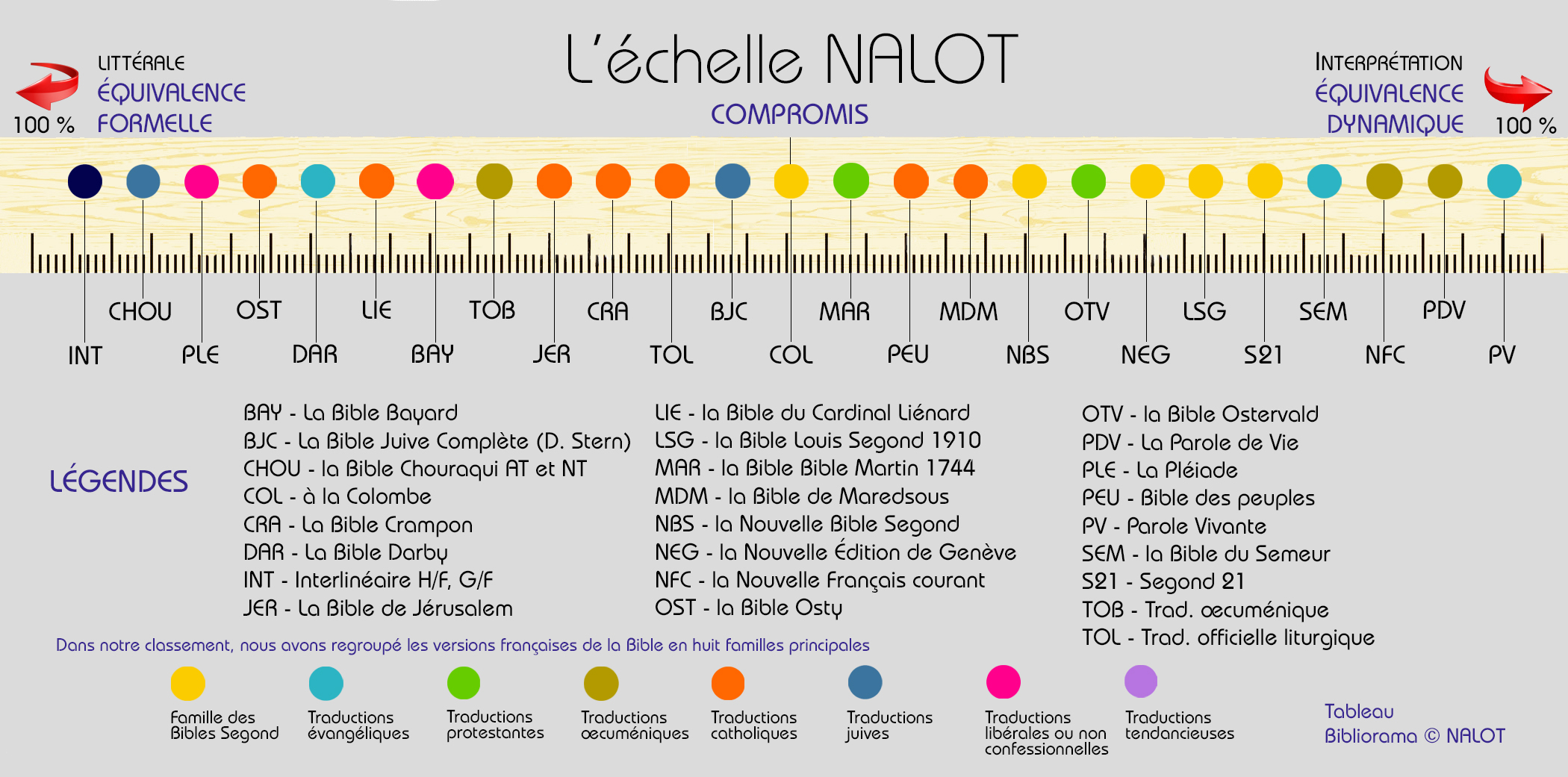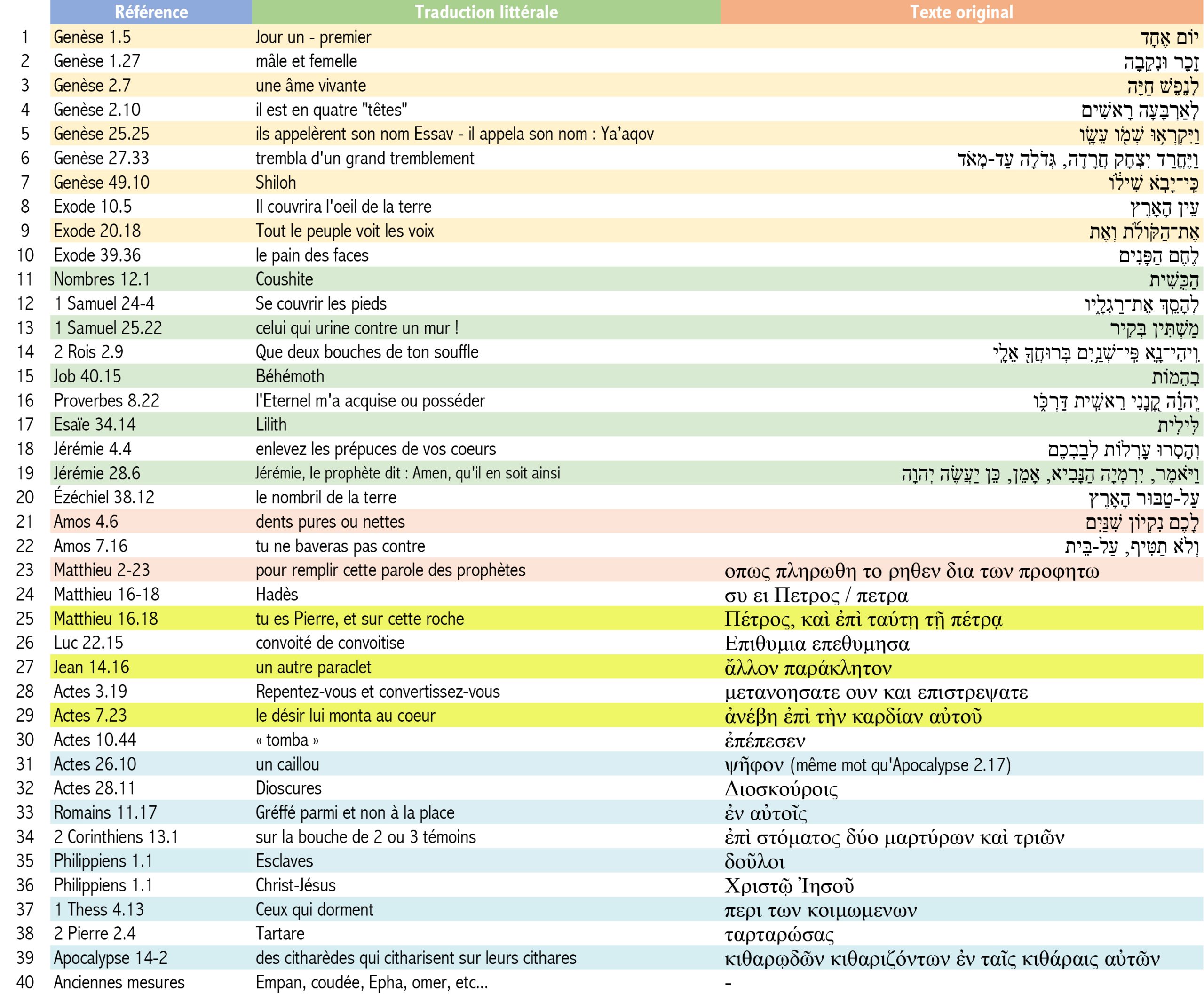
Bible, History, Archaeology
Bible,
History,
Archaeology
The Nalot ladder
A tool for identifying Bible translations
Introduction
The NALOT scale is a tool which, at a glance, shows the position of French Bible translations on a ruler, from the most literal to the most dynamic.
The table below shows that the most literal translations are at the far left, and those with dynamic equivalence at the far right. In the middle, you'll find the Bibles with a good compromise.
Note that this scale only includes Bibles available for sale today.

Courtesy of Bibliorama Alexandre Nanot.

What defines it as such, while the Sower's version, which aims to be a Bible close to the originals, is at the extreme right?
The aim is to show the choice of the position of the Bibles on the scale, and to do this we have drawn up the NALOT Table to enable us to fix the points of the NALOT scale.
Image opposite: two commentators share their views on different passages of the Bible. © 2150495825. Juicy FOTO.
Ideally, everyone would like to be able to read the original texts in Hebrew and Greek, but this is not within everyone's reach. To make up for this, we have to resort to translations, and let's face it, in France, there's no shortage of them.
The closest tool in terms of translations would remain an interlinear.
Here is an example:


The manuscript containing one of the earliest complete copies of the Ten Commandments from the book of Deuteronomy (5:14-19). Precise epigraphic and paleographic studies have dated the manuscript to the Herodian period between 30 and 1 BC. Israel Museum, Jerusalem.
The original expression translation approach
Hebrew has its own expressions, idioms and semantic fields, and so does Greek. There are many Hebrew expressions in Scripture, and translating them literally can sometimes obscure understanding.
Let's take two examples:
The Bible repeatedly says that the Lord was angry (Numbers 12:9; Deuteronomy 11:17; Judges 10:7, etc.). In Hebrew, if translated literally, this would render as Chouraqui proposes:
«The nostril of IHVH-Adonai continues to burn against Israel»
or even
«Ia'acob's nostril burns against Rahél» (Genesis 30:2).
To emphasize the meaning as stated in 2 Kings 17,18:
«IHVH-Adonai has nariné fort contre Israël » (Chouraqui version) - «And the Lord was very angry with Israel» (Darby version).
Image opposite: a copy of Gutenberg's first printed Bible, circa 1450. © British Museum, London.
Hebrew, for example, has its own euphemism for the action of satisfying a natural need, an expression found twice in the Bible in Judges 3:24 and in the First Book of Samuel 24:4:
«Saul went in to cover his feet. »(version à la Colombe), «where he entered to satisfy a natural need».» (Segond 21 version). If you find the expression «to cover one's feet», you'll get a literal translation.
The Bayard Bible, in Judges 3:24, dares to translate as follows:
«No doubt he's pulling down his knickers in the cool bedroom».
The Parole de Vie version renders it slightly as:
«They think the king relieves himself inside».
The Sower version renders this passage as:
«the king was relieving himself».», and almost all pre-18th-century Protestant versions render it as :
«No doubt, he's minding his own business in his summer bedroom».
The Nalot painting
We have taken 40 expressions, idioms and euphemisms and pointed out the translations that respect the meaning of the original.
Here are the results of the literal translation of these 40 expressions:



